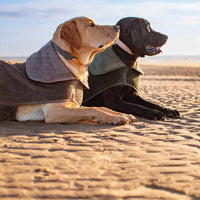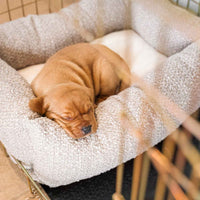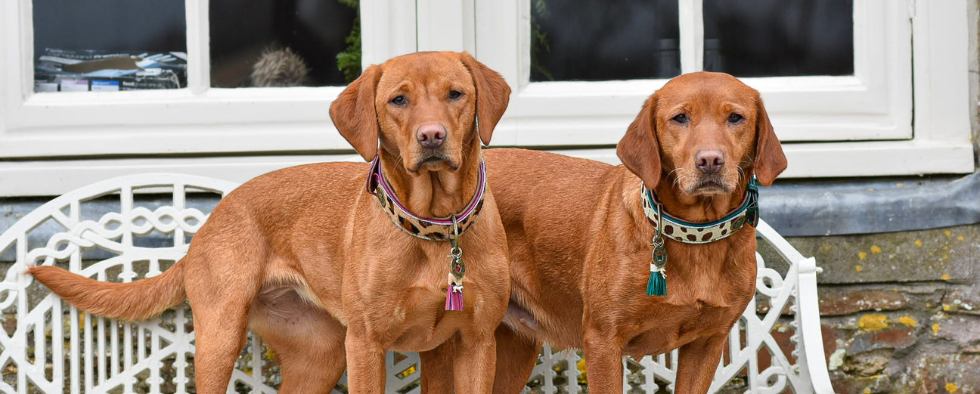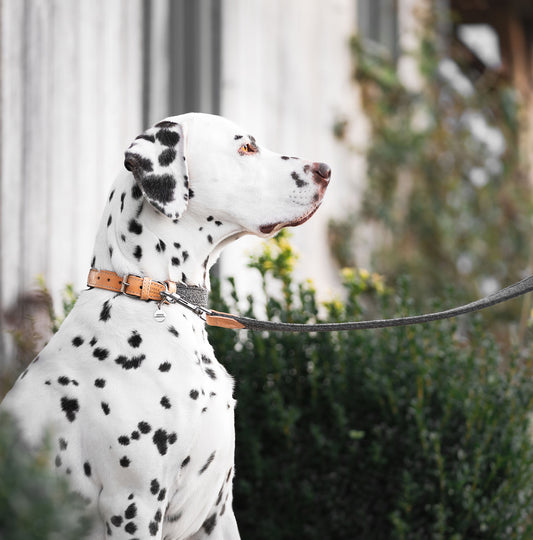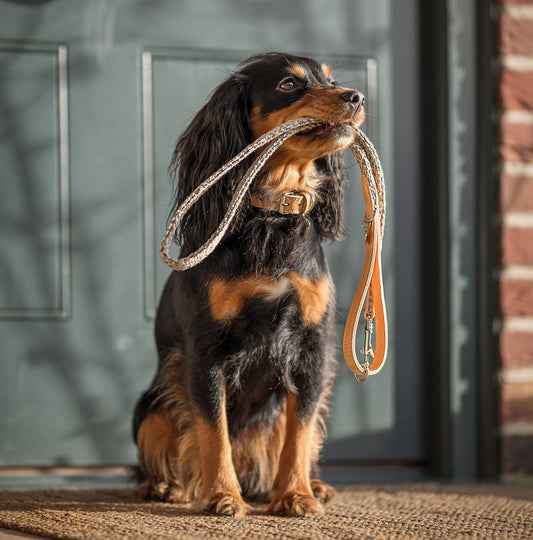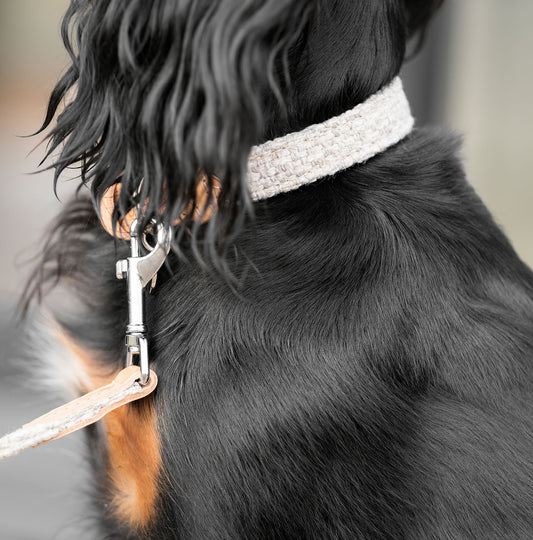With the weather finally starting to get a little brighter and warmer, if you’re anything like us you’ll be looking to go on some longer dog walks and days out with your furry friends. Collars are an essential for any trip out with your dog but we know that choosing the right collar for your dog can be overwhelming. In this guide, we’ll discuss how to pick the perfect dog collar, how to fit a collar correctly and what the correct tightness should be.
Does My Dog Need A Collar?
It’s now a legal requirement for all dogs to wear a collar when they’re in public places with an ID tag attached, so whilst you may not choose to put one on your dog at home they will need one for whilst you’re out and about even if you prefer to walk them on a harness.
How To Choose A Dog Collar
When choosing a dog collar there are a few factors to consider
- Material
- Style
- Your dog’s breed
- Purpose
Which material dog collar to choose
The main materials dog collars are fabric collars which are usually made from nylon or polyester, leather or faux-leather dog collars, metal dog collars and rope dog collars. Which material you pick will depend on your dog. Nylon collars are lightweight, easy to clean and often come in fun designs, where as leather collars are more durable and often softer on your dog’s coat. If you’re looking for a leather dog collar, our leather dog collar guide rounds up our leather collars and talks you through which one to pick for your dog.
Which style of dog collar to pick
Dog collars also come in different styles, some fasten with a buckle whereas others use a clip. The choice of fastening tends to be personal preference, buckles tend to be a bit longer lasting and more sturdy, whereas clips are quicker and easier to get on and off your dog.
The most popular style of collar is a flat collar which sits flush with your dog’s neck. The flat surface helps to distribute pressure evenly on your dog’s neck so is a good choice if your dog likes to pull.
Rounded collars, which are usually leather or rope, are great for dogs with long coats or who get irritated by traditional flat collars, the round shape is more gentle on their necks.
There are also collars which have been designed especially for hounds and whippets. These are thicker at the back of the collar and fasten with a buckle at the front. They have been designed especially for long necked breeds to provide comfort and support whilst they’re walking
Slip Leads, as the name suggests, are easy to slip on and off your dogs. These act as both a collar and a lead and will simply slide over your dog’s head. They’re usually used for gun dogs, however if your dog has a tendency to pull then these might not be the best choice for them as the collar size will tighten as they pull which can put unnecessary pressure on their neck.
Which dog collar to pick for my breed of dog
As we mentioned above the breed of your dog can also influence the style of collar you pick, with hound collars being better for long necked breeds and round collars better for long haired breeds. If you have a smaller breed or a puppy we recommend a lighter weight collar like a nylon collar so that it’s not too heavy for them and putting extra pressure and weight on their neck. Whereas for larger dogs you probably are better looking at something more durable such as a leather collar as they will naturally put more stress on the collar if they pull on it at all and are likely to want the support that a leather collar offers.
Dog Collar Purpose
Hopefully the above has given you a little more information about what collar to pick for your dog but the last thing to think about is purpose. If you’re just using your dog’s collar to hold their ID tag and are planning to either let them walk off lead or use a harness to walk them, then you’re probably okay with a lightweight collar, perhaps a nylon collar. Whereas if you’re going to use the collar to attach your dog’s lead to then maybe a leather dog collar may be more fit for purpose.
How To Fit A Dog Collar Correctly
Once you’ve decided what style and material of collar you want all that’s left to do is pick the right size collar - don’t worry we know that’s easier said that done which is why we have created a guide to help you measure a dog collar. We’ve put the basics below but if you’re looking for a little more information check out our handy guide here
- Get a fabric tape measure and place it round your dog’s neck where their collar would usually sit
- Place two fingers between the measuring tape and your dog’s neck
- Take the measurement and add one to two inches
- Use this measurement when looking at size guides for your dog’s collar - if your dog sits at the top of one size range and the bottom of another we recommend picking the one they sit at the bottom of.

How to pick a size of collar for a puppy
In the first few months of your puppies lives they’re likely to go through a few collars as they grow so quickly. When it comes to measuring your puppy for a collar follow the same steps as above but keep in mind how quickly they grow in those first few weeks.
As we mentioned above we usually recommend lightweight nylon collars for puppies, these are usually super adjustable so are perfect for growing puppies. Getting your puppy used to wearing a collar even before they go out for their first walk can really help them, their first walk will be daunting for them so by getting them used to a collar as early as possible will help it be a little less scary for them.
Many breeders use whelping collars, which are brightly coloured lightweight collars, to help identify the pups in the first few weeks but are also great for getting puppies used to wearing collars.
What Is The Correct Tightness Of Dog Collar
Knowing how tight to make your dog’s collar can be tricky sometimes, it needs to be tight enough so that they can’t easily escape it but loose enough that it’s not hurting their neck. The general rule of thumb is make sure that you can fit two fingers between your dog’s collar and their neck.
We hope this guide has helped you pick the perfect collar for your pooch, don’t forget to check out our range of designer dog collars - we’re sure to have something to suit your dog.


























